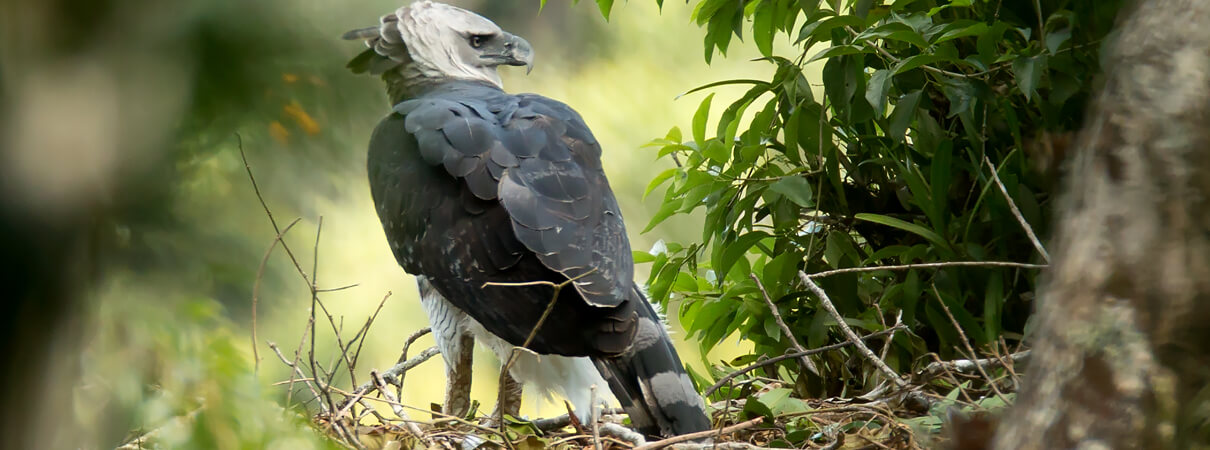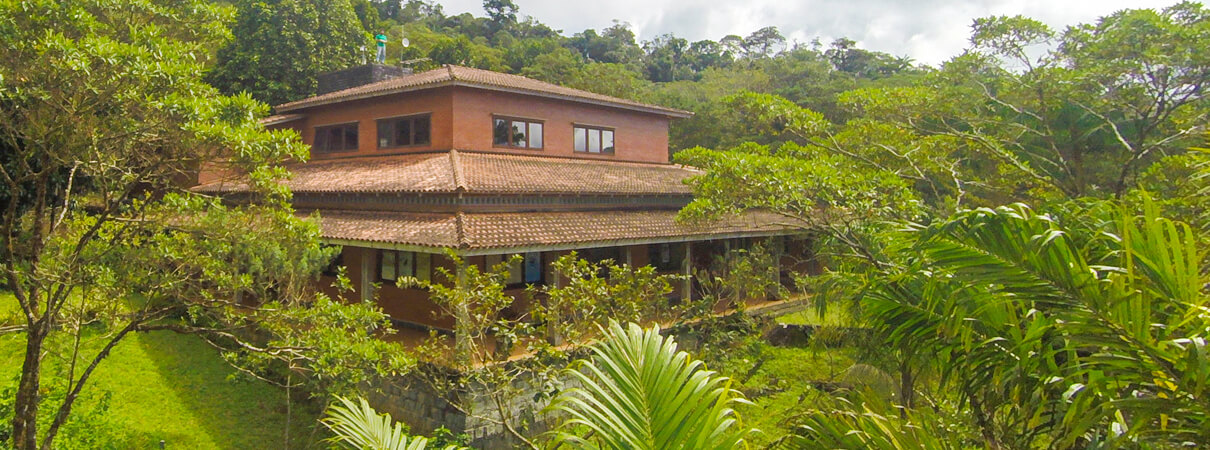Harpy Eagles Return to Nest at Brazil's Serra Bonita Reserve
Harpy Eagles, some of the largest and most powerful eagles in the world, are apex predators of South American lowland rainforests. This imposing bird has powerful legs as thick as a man's wrist, ending in huge talons as large as bear claws – adaptations for dispatching its prey, often monkeys and sloths.
Harpy Eagles once occurred throughout the mega-diverse Atlantic Forests of Brazil, but have virtually disappeared from this unique ecosystem due to hunting and habitat loss. Thanks to ABC's partnership with Dr. Vitor Becker, Clemira Souza, and their land conservation organization, the Instituto Uiraçu, this powerful raptor has once again been recorded nesting in the area.

Harpy Eagle nesting at Serra Bonita by Gustavo Magnago
The Disappearing Atlantic Forest
The Atlantic Forest ecosystem abounds in unique bird and animal life. Cherry-throated Tanager, Araripe Manakin, and Stresemann's Bristlefront are just a few of the critically endangered birds found only in these forests, which once lined the Atlantic coast of Brazil and extended south into Paraguay, Uruguay, and Argentina. Centuries of deforestation have destroyed much of the original Atlantic forest, and today less than 10 percent of it remains.
Frustrated by the continued rapid disappearance of these forests, Dr. Becker and Souza decided to dedicate the rest of their lives to protecting a forested mountain, the Serra Bonita (“beautiful mountain” in Portuguese), in the southern portion of the state of Bahia. This mountain, where Dr. Becker had conducted research for many years as a lepidopterist, was still covered in high-quality wet broadleaf forest.
Serra Bonita is close to the town of Camacan, in the heart of what was once an important cacao-producing region. That industry went bust in 1989, when a fungus made it impossible to produce cacao in an economically viable way, and the region was left devastated.
With the resulting crash in land values, Dr. Becker and Souza saw an opportunity to protect their "beautiful mountain" and put the town of Camacan back on the map as a place where nature was protected and a new respect for the land could take hold.

Serra Bonita Reserve by Luis Claudio Marigo
Harpy Eagles, Just a Memory
When the couple began to purchase land on and around the mountain in 1997 there were no Harpy Eagles remaining in the area. The most senior citizens recalled seeing them in their youth, but said the eagles were gone because people shot them for sport and to keep the birds from killing monkeys.
The couple teamed with family and friends to found the Instituto Uiraçu in 2001 to protect even more land around Serra Bonita and create new reserves. They chose the Harpy Eagle (Uiracu in the Tupi Indian language) as the new institute's mascot for its strength, courage, wide vision, and vitality. The couple resolved to be so successful in land protection and stewardship that the Harpy Eagles would one day return to nest at Serra Bonita.
On rare occasions since the Institute's founding, lone Harpy Eagles were seen perching in high trees at Serra Bonita. In 2011, a juvenile eagle was even photographed by a camera trap. However, there was no evidence that a mated pair of eagles had returned to nest at Serra Bonita.

Research Center at Serra Bonita by Bruno Miranda
Return of a Mascot
Enter the Projeto Harpia (Harpy Eagle Project), a Brazilian organization dedicated to the conservation of Harpy Eagles. For the last 20 years, this program has monitored eight harpy eagle nests in the Atlantic Forest, and earlier this year began to monitor Serra Bonita in hopes of finding a Harpy Eagle nesting tree. After only a few days of searching, a team located a nest occupied by an incubating pair of eagles – exciting news for project and reserve staff.
This Harpy Eagle nest at Serra Bonita is the fifth mapped by Projeto Harpia in the state of Bahia, and the northernmost Harpy Eagle nest recorded in the Atlantic Forest. This finding provides evidence that these large raptors have had sufficient space and prey to successfully maintain a breeding territory in the reserve. A downy white eagle chick was recently observed in the nest by park rangers, being tended by both parents.
"To me and Clemira the discovery of this nest was a great surprise," Dr. Becker said. "We feel gratified that all the effort and resources we invested to save this piece of Atlantic Forest has paid off. The presence of the eagles shows our partners and collaborators that their support of the reserve has been effective."
Find out more about visiting Serra Bonita here.


















































